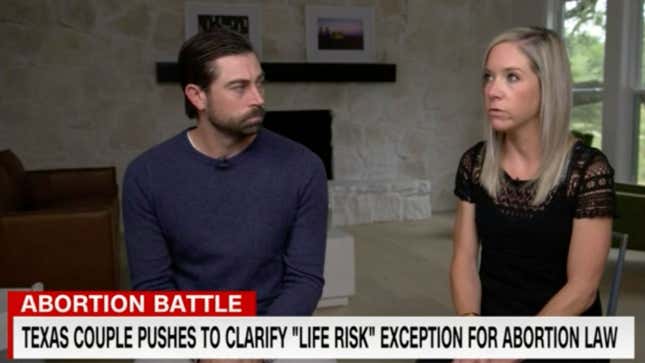Texas Woman Told to Wait Until She Was ‘Sick Enough’ for Emergency Abortion
“[This] didn’t have to happen,” Amanda Eid, who developed sepsis and is possibly now infertile, told CNN. “That’s what’s so infuriating about all of this.”
AbortionPolitics

Over the summer, Amanda Eid’s water broke at just 18 weeks. Even though the Texas woman faced a high risk of infection or death the longer she carried the fetus, her doctors told her she couldn’t have an emergency abortion until she was “considered sick enough that [her] life was at risk,” CNN reported on Wednesday. The risk of life-threatening infection is even greater if the pregnant person’s water breaks.
Despite the threat Eid’s nonviable pregnancy posed to her life, the fetus still had a heartbeat, meaning Texas’ stringent abortion ban—which threatens abortion providers with life in prison—prohibited her from immediately receiving an emergency abortion. “My doctor said, ‘Well, right now we just have to wait, because we can’t induce labor, even though you’re 100% for sure going to lose your baby,’ ” Eid told CNN. “[The doctors] were unable to do their own jobs because of the way that the laws are written in Texas.”
Shortly after Eid’s water broke, the hospital sent her and her husband, Josh Zurawski, home and instructed them to watch for signs of infection, like sepsis. But the span of time for an infection to develop ranges from hours to days to weeks. The couple said they felt stuck—if signs of infection could arise within “hours,” there wasn’t time to travel out-of-state for a legal abortion.
-

-

-

-

-

-

-

-

-

-

-

-

-

-

-

-

-

-

-

-

-

-

-

-

-

-

-

-

-

-

-

-

-

-

-

-

-

-

-

-








































